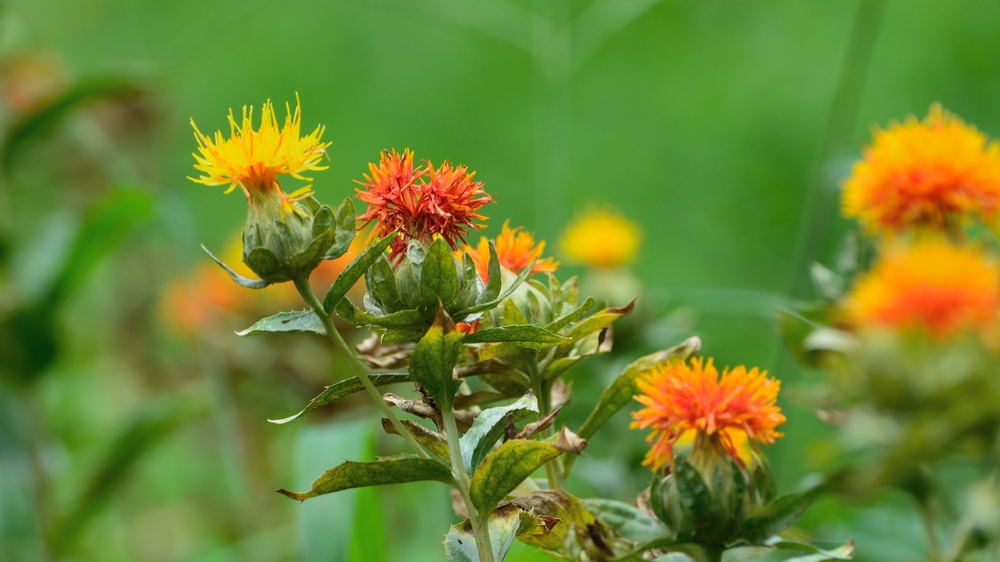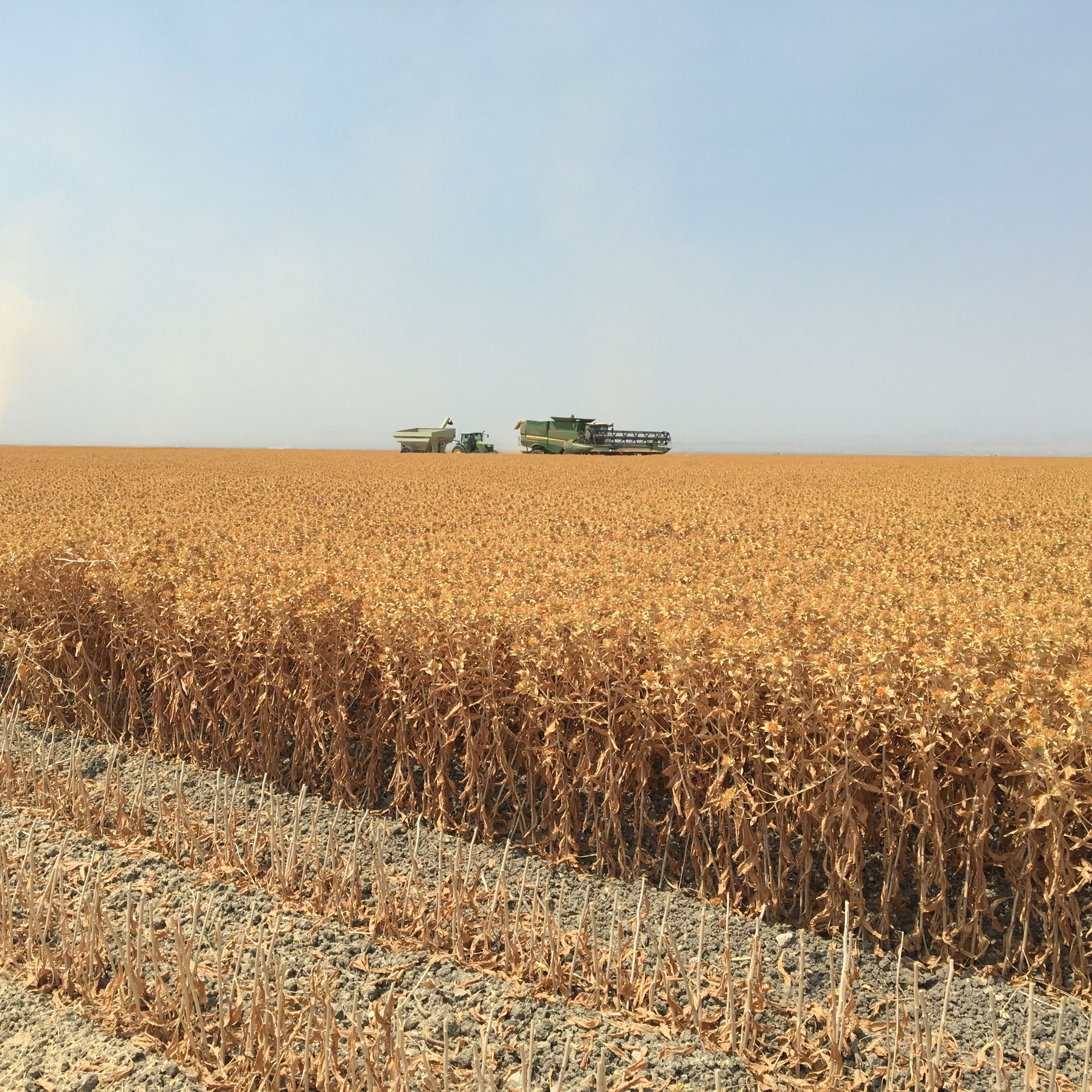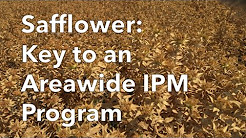Safflower Makes an Areawide IPM Program Work

Safflower is the Rodney Dangerfield of crops.
The prickly thistle easily pokes through clothes and skin. The oil it produces is a low-value commodity. Few pesticides are available for it, because it's a small-market crop with small margins. And it's a haven for insects that can harm more profitable crops nearby.
"Lygus bugs enjoy being in a safflower field," said University of California Cooperative Extension Advisor Pete Goodell. "And they're about the only thing that does."
But this plant, which gets no respect, is the key to an incredibly successful soil health and areawide integrated pest management program — and a great illustration of how IPM works.
Turns out, safflower is the star of the show.
A Critical Rotation Crop
 The safflower story plays out in an area known as the Tulare Lake Bed subregion, a low-lying basin at the southern tip of California’s San Joaquin Valley. There is no surface or subsurface outflow of water in the basin, so the water table is high and salts concentrate over time, creating water- and soil-quality problems that seriously limit the type of crops that can be successfully grown.
The safflower story plays out in an area known as the Tulare Lake Bed subregion, a low-lying basin at the southern tip of California’s San Joaquin Valley. There is no surface or subsurface outflow of water in the basin, so the water table is high and salts concentrate over time, creating water- and soil-quality problems that seriously limit the type of crops that can be successfully grown.
Safflower solves the problems. It has a deep taproot that open up channels for salts to wash down below the root zone of more-profitable crops. It also doesn’t need in-season irrigation, and dries up fields waterlogged after growing irrigated crops. It increases the organic matter in soil and makes fields more fertile.
In the 1990s, safflower was often grown in a rotation with Pima cotton and alfalfa. In the early 2000s, area growers began planting processing tomatoes in a big way, replacing both alfalfa and safflower. During that period, around 2006, a lygus bug outbreak pretty much devastated the cotton crop.
“The day after a spray you could go into a field and the lygus counts were already above the threshold to trigger another spray,” said Nick Cooper, an agronomist with the J.G. Boswell Company, one of the area’s big growers. “It was out of control.”
Growers in the area stayed away from safflower for about 10 years – but doing without it was a mistake.
“Soil health declined,” explained Beau Howard, an agronomist and pest control advisor also with Boswell. “A lot of our fields moved backwards in terms of soil health and production yields.”
“It was essential to get safflower back in our crop rotation,” Cooper said, “but we had to be smart.”
An Areawide Approach
The growers – who had banded together as the California Safflower Growers’ Association – approached Goodell, and he suggested they stop treating individual safflower fields for lygus and instead treat the whole area at once. Lygus go through several nymph stages before developing wings and migrating to other fields and it’s in those pre-wing stages, the third and fourth instars, that they are most vulnerable to pesticides.
In the field-by-field approach, the pests were constantly in different stages of development. A grower could spray, only to see his field recolonized by new insects migrating from other fields the next day. Goodell helped the growers in the area come up with a joint management plan – treat every field, some 30,000 to 40,000 acres – at once.
“The idea is to knock them all out in the safflower at one time, and reset the population to zero,” Cooper said. “So we all monitor our fields and spray in a really concentrated window over two or three days.”
Cooper coordinates the joint offensive with other Boswell managers and the half-dozen or so neighboring growers. They sample the safflower fields in the spring, and when the lygus are hitting the third and fourth instar stages, Cooper calls the other growers, pest control advisors and pesticide applicators to plan a two-night aerial spray. As new nymphs hatch, the process is repeated, usually for a total of three treatments in the safflower fields at three-week intervals.
The lygus treatments also knock down populations of another insect, beet leafhoppers, that carries a virus that damages tomatoes.
“It’s really paid off,” Howard said. “It’s reduced the number of sprays we have to do in our cotton fields, and reduced the overall number of pesticide applications we need to make. And yields are up. In 2006, we were getting yields of 2.6 bales of cotton an acre, and now we’re seeing 3.5 bales an acre, and that turnaround is because of soil health. The soil is just that much better after a safflower rotation.”
Resistance Worries
The big concern for the growers is that they only have three insecticides available to treat lygus, and they’re terrified of what happens if the bugs develop resistance to them.
“Resistance management is the weak point in our strategy,” Howard said. “We just don’t have many options to use.”
The only three insecticides approved for use in safflower are one pyrethroid and two organophosphates – all broad-spectrum products that kill beneficials as well as pest species.
“Ideally we’d have something that protects beneficial insects, but our hands are tied,” Howard said. “We tank-mix combinations for each spray but are using the same products over and over.”
It’s safflower’s small-crop status that really hurts in this area, because pesticide manufactures don’t have an economic incentive to do the testing and trials necessary to get other products approved for use in safflower.
“The problem is we’re the only place in the country that cares about it,” Howard said. “It’s a minor crop.”
The Western IPM Center recently funded the development of a pest management strategic plan for safflower to document those needs, which can help attract needed funding. The California Safflower Growers’ Association is also actively working with the IR-4 specialty crops pesticide development program to get other insecticide approved for use in the crop, especially selective products that are more environmentally friendly. Part of the argument is showing the overall value safflower has, beyond its commodity price.
“I cannot overstate the importance of this areawide program in our ability to grow cotton,” Cooper said. “We get the agronomic benefit to our soil without the detriment of bugs.”
